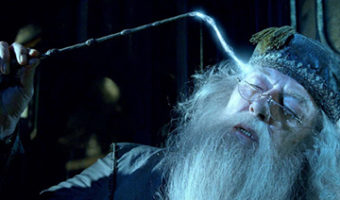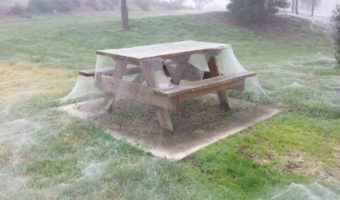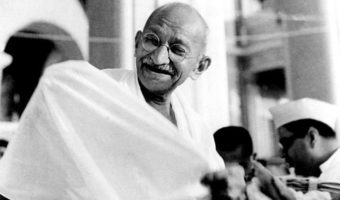10 of the Craziest Events Caught Live on TV
6 Thousands of people in person and on television eye-witnessed the space shuttle Challenger explosion just 73 seconds after its take-off on 29 January 1986. There were seven people on board including a teacher, and none of them survived.
After taking off, the space shuttle Challenger exploded just after one minute and 13 seconds into bits and pieces emerging as one of the most iconic and catastrophic breaking news events in the history of television.
The reporter at Florida Kennedy Space Center who covered the launch described the incident as looking at the sky filled with clouds of smoke, and it was as if fireworks were coming out from the vehicle.
The destructive event killed all seven of the onboard passengers including Christa McAuliffe who was the first teacher and ordinary civilian to set out for space.
The event is looked at as a defining one and historically significant for the media because it was the first time that such an instance had occurred, and there was no idea how the media was going to cover it live. It was the first time that the shortcomings of science and engineering had to be explicitly explained to the public and the media. (1, 2)
7 Japan was hit by a tsunami and earthquake in 2011 making the event the costliest natural disaster in world history by causing an economic loss of $235 billion estimated by the World Bank. The calamity also killed nearly 16,000 people. The disturbing images and videos went out into the public very rapidly.
It was 11 March 2011 when a Tsunami of magnitude nine hit the northeastern coast of Honshu, Japan’s main island. The earthquake started at 2:46 p.m. local time and only lasted for six minutes but had devastating consequences. After drilling the subduction zone, scientists found a thin and slippery layer of clay lining the fault. Researchers claim that this layer allowed two plates to slide a huge distance resulting in a tsunami and earthquake.
A total of 1,124,000 buildings were partially or completely destroyed, and the direct financial loss was estimated at around 16.9 trillion yen, which is about $199 billion. Fifteen thousand, eight hundred and ninety-four people died, and 2,500 were reported missing. Every little detail, photo, video, and report were constantly aired on the TV to make the people aware and alert.
To the response of the entire happening, the Meteorological Agency was denounced for underestimating the size of the waves. Japan also created and installed a new, upgraded tsunami warning system to be more prepared for the next time. (1, 2)
8 The dramatic and historic fall of the Berlin Wall on 9 November 1989 featured thousands of people who, live on TV, tried to bring down the wall with the help of hammers and pickaxes.
The wall was built back in 1961 after World War Two by the Soviet Union and its Western allies because East Berlin was forcing people to the West. The East zone of Berlin was full of Soviets, and the Western part had three separate zones of French, British, and Americans.
The revolts started in the Eastern bloc of the city after the Soviet Union started facing economic problems and food shortages in the 1980s. On 4 November, more than 500,000 people came together to protest, and they eventually broke down the wall after just five days.
The head officer present at the site gave the report that people could have been injured or even killed in scuffles. Force would also have been useless as the number of officials was just a handful in comparison to the thousands of protesters.
So, they had to open the barriers, letting the crowd flow in full of celebration. Many also climbed the wall and started chipping away at it with hammers and pickaxes. The big news was all over the television in a matter of minutes and portrayed it as a dramatic moment that would change the course of history. (1, 2)
9 The German passenger airship LZ 129 Hindenburg caught fire and was destroyed on 6 May 1937 in New Jersey, US while docking at the Naval Air Station Lakehurst. The aircraft had 97 people on board and the disaster claimed 35 fatalities, including the passengers and crewmen.
The Hindenburg had taken off from Frankfurt, Germany three days before the crash. The trip was delayed by 12 hours because of headwinds, but the rest of the journey seemed safe and smooth.
As soon as the aircraft was on an approach to land on the Naval Air Station Lakehurst in New Jersey, exactly at 7:25 p.m., flames appeared on its tail, then the entire tail caught fire. Within just 34 seconds after that, the entire Hindenburg burst into flames. The crash was extremely horrifying to watch at first. The outer fabric of the Hindenburg was wiped away leaving the duralumin skeleton which also collapsed after just a few seconds. Everything was caught live on TV because generally, celebrities also flew in such flights, and news reporters were ready to film them.
The people closest to the windows and periphery jumped to safety as soon as they knew what was wrong, but still, 35 of them were killed including 13 passengers and 22 crewmates.
The result of the event led to the decision of calling off the plans that American and German companies were making looking forward to building similar airships. It was basically the end of the hydrogen ships. (1, 2)
10 Amidst the recent Australian bushfire crisis of 2020 when major parts of the country were under fire, a fire-fighter who lost his home refused to shake hands with Prime Minister Scott Morrison on live TV coverage making the moment very awkward.
This happened when the prime minister visited a tiny village named Cobargo in the NSW, Bega Valley. The Prime Minister approached a random fireman and offered to shake hands with him. The furious and brave man refused to take hand and shook his head saying “I don’t really want to shake your hand.”
The very next moment, Morrison leaned down a little bit to grab the person’s hand, and the fireman again rudely ignored him by pulling his hand away from the prime minister. Morrison then walked away embarrassed to shake the hand of a different person standing near him.
Morrison came to realize that the fireman had lost his house during the disaster when Morrison asked another fire officer to tell the man that he was sorry, and the officer replied, “No, no, no! The man has lost his house.”
The entire scene was broadcast live on TV and also went viral on Twitter with thousands of criticisms against the prime minister for handling the bushfire disaster incompetently. (1, 2)























